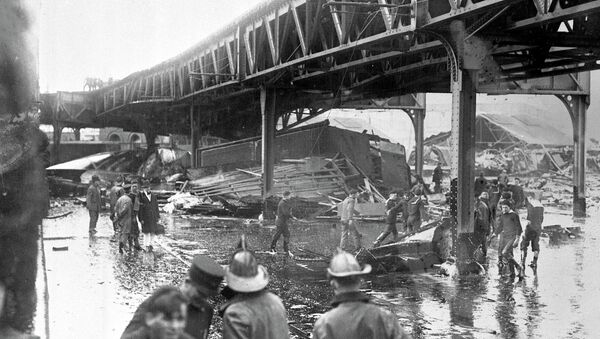One of the most notable examples of a tragic event in this industry happened in 1919 in Boston: The Great Molasses Flood. Molasses, in fact, can be deadly – as just about anything if handled improperly.
January 15, 1919, in Boston, Massachusetts, a molasses storage tank burst. The sheer size of the tank and the fact that it was located in an urban area resulted in massive devastation: 21 people died and around 150 were injured. The 15 meter tall and 27 meters wide cylindrical tank contained roughly 2,300,000 gallons of molasses: a viscous by-product in the sugar refining industry, which is used for various purposes, such as alcohol production by fermentation.
The temperatures in Boston were sub-zero for a few days, until it climbed rapidly to 4.4 Celsius (around 40 degrees Fahrenheit). This caused molasses to expend more rapidly than the tank could have handled. Other causes may have contributed, such as CO2 buildup due to ongoing fermentation, unchecked structural fatigue and general negligence. In any case, at about 12:30 pm, the tank burst and launched a wave of molasses through the surrounding streets at an estimated velocity of 35 miles per hour and a peak height of 25 feet. It was so powerful that apart from knocking out people and horses, the wave of molasses threw a railroad car off the tracks. Apart from the viscous fluid, the air pressure wave was also reported as being devastating, even throwing a truck into the Boston Harbor.
In the Smithsonian Article "Without Warning, Molasses in January Surged Over Boston" Edwards Park described the aftermath:
The death toll kept rising, day after day. Two bodies showed up four days after the tank burst. They were so battered and glazed over by the molasses that identification was difficult. The final count was 21 dead, 150 injured, a number of horses killed. The molasses wave, after spreading out, covered several blocks of downtown Boston to a depth of two or three feet. Although rescue equipment was quick to arrive on the scene, vehicles and rescue workers on foot could barely get through the clinging muck that filled the streets.
The disaster had far-reaching implications and is still well-remembered to this day. And article in the Yankee Magazine, published in January of 1965, noted:
It was weeks before the devastated area was cleaned up. Of course, there was great controversy as to the cause of the tank's collapse. And there were about 125 lawsuits filed against the United States Industrial Alcohol Company. The trial (or rather the hearings) was the longest in the history of Massachusetts Courts… Altogether, more than 3,000 witnesses were examined and nearly 45,000 pages of testimony and arguments were recorded. …[Eventually] the owners of the tank paid in all nearly a million dollars in damages—and the great Molasses Case passed into history.
Apart from the drawn-out legal process and a large, by the time, amount paid by the owners, Boston city authorities began requiring that plans for all construction projects be signed off by an engineer or architect and filed with the city's building department. This practice soon spread throughout the United States to make sure similar disasters would not happen.

